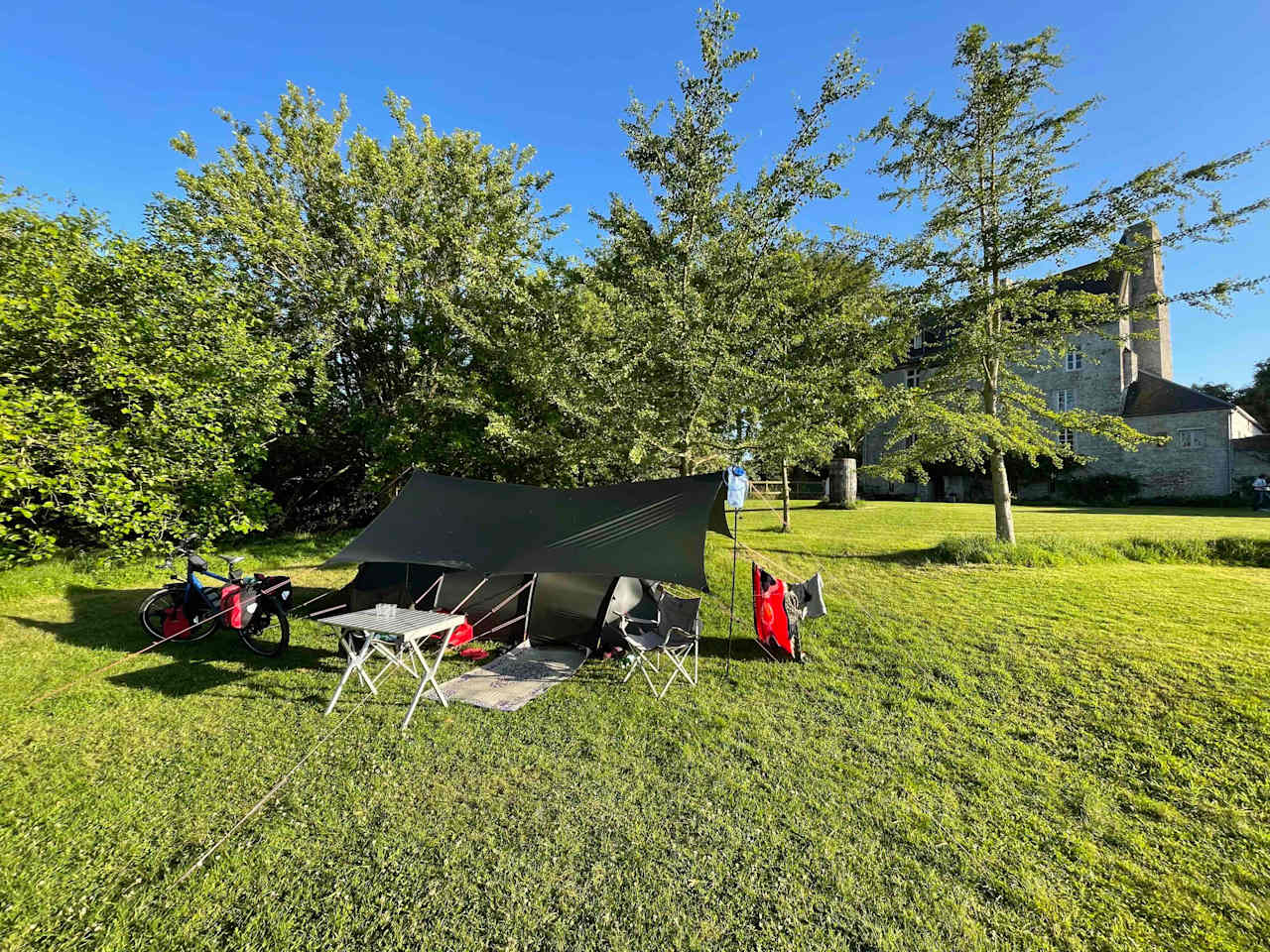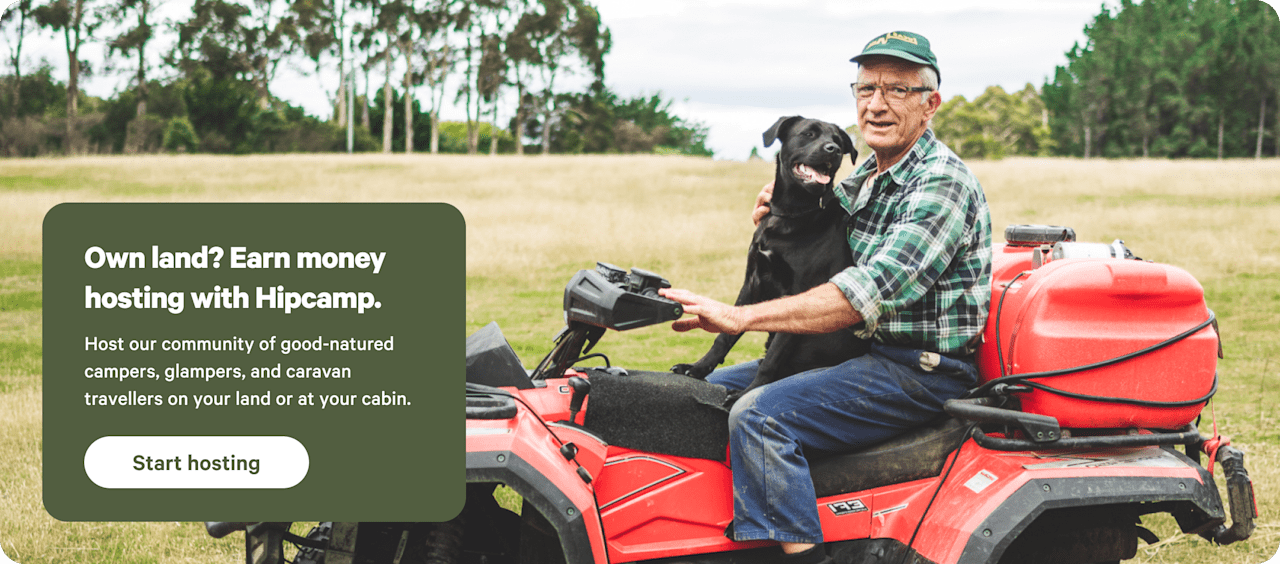Beach campsites near Caen with swimming
Explore D-Day beaches and medieval monuments from this Normandy port of call.
Popular camping styles for Caen


Beach campsites near Caen with swimming guide
Overview
Cider, Camembert, Calvados—Normandy’s most famous exports are known as the “three Cs”, so why not add another one to the list? With its romantic half-timbered Old Town, mighty medieval castle, and student-centred nightlife, there are plenty of good reasons to make Caen your Normandy base camp. The 11th-century stomping ground of William the Conqueror is today better known for its proximity to Normandy’s D-Days beaches and WWII museums, as well as for its popular Channel ferry port. Campers have options, too—seasonal seaside campsites, rural Hipcamps, and roadside aires (caravan parks) dot the route between port and city.
Where to go
D-Day beaches
British campers and caravanners arrive at Ouistreham, just a few minutes’ drive from Caen’s city centre, but the most popular route sets out west along the rugged, sea-cliff-fringed Normandy Coast. Forever enshrined in history as the location of the D-Day Landings, the road trip to Omaha, Sword, Juno, Gold, and Utah beaches (still known by their Allied code names) is scattered with WWII memorials, museums, and war cemeteries. Bring your campervan and plan a few days to take it all in.
Côte Fleurie
East of Caen and Ouistreham, the Côte Fleurie is Normandy’s prettiest stretch of shoreline, running from Merville-Franceville-Plage up to Honfleur on the Seine Estuary. Join vacationing Parisians in the luxe resort towns of Deauville and Honfleur, check into a seafront campsite at Trouville-sur-Mer or Cabourg, or venture along the coast to explore its sandy beaches, brooding sea cliffs, and Belle Époque villas.
Inland Calvados
The Calvados region is the heart of Normandy, and there’s plenty to explore away from its coastline. The Bayeux Tapestry is a regional icon, after which you can stop in Beuvron, listed as one of the “most beautiful villages in France,” and follow the Normandy Cider Route between rambling apple orchards and traditional cider cellars.
When to go
Caen’s top attractions overflow with tourists in peak season (July-August) and during Normandy’s D-Day Festival (around June 6), when campsites often bump up their fees. To avoid the crowds, spring and fall are ideal, and the autumn apple harvest is a regional delight. Most campsites are open from April through October, but you’ll find a few with year-round sites—in case you want to swing by Caen’s popular Christmas market.
















